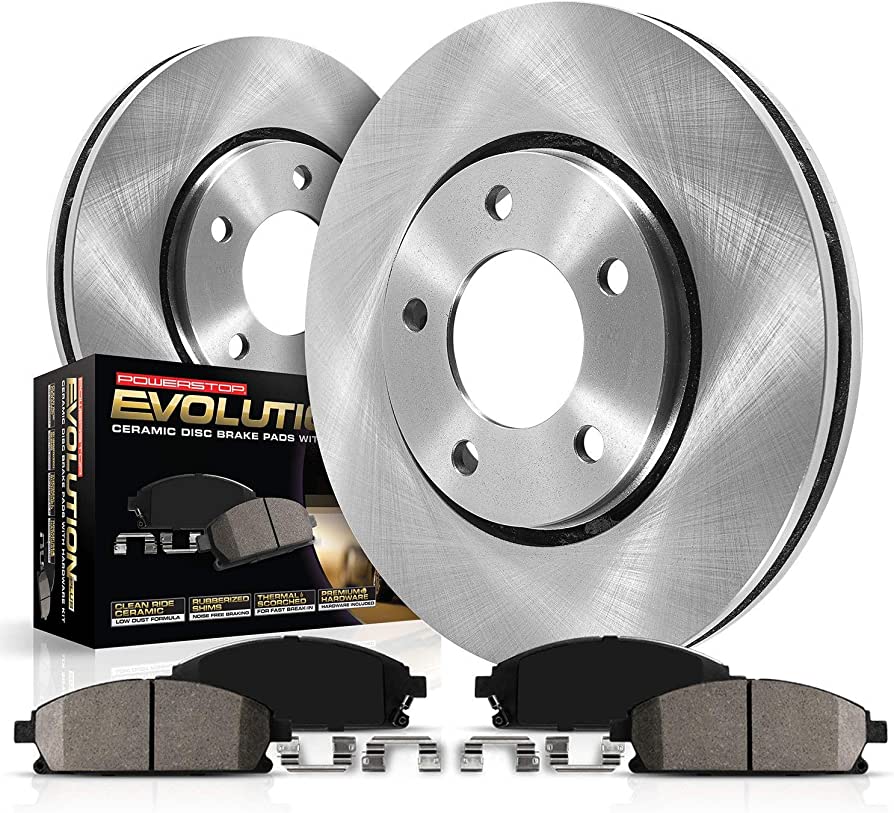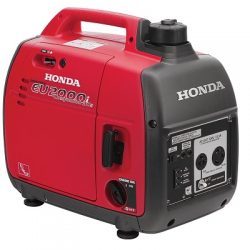Are Ceramic Brake Pads Worth the Investment?
Ceramic brake pads offer superior performance but come at a higher cost compared to other types of brake pads. Ceramic brake pads have become increasingly popular as the demand for better braking performance grows.
They are popular for sports cars and high-performance vehicles. They offer numerous advantages such as reduced dust, less noise, and improved wear resistance compared to traditional brake pads. Ceramic brake pads are also lighter than other types of brake pads, which means less stress on the rotors.
However, ceramic brake pads typically come at a higher cost, and they may be more prone to cracking under extreme conditions. In this article, we will explore the pros and cons of using ceramic brake pads.

Credit: www.phastekperformance.com
Advantages Of Ceramic Brake Pads
Increased Durability And Longevity Compared To Other Types Of Brake Pads
Ceramic brake pads are known for their superior durability and long-lasting performance. However, how exactly do they compare against other types of brake pads in terms of longevity? Here are some points to take note:
- Ceramic brake pads are made from a combination of materials, including ceramic fibers, nonferrous filler materials, and bonding agents. This potent concoction gives ceramic brake pads their unique properties.
- Ceramic brakes pads are tougher than their traditional counterparts. They are not only more heat-resistant but also more wear-resistant, which means they can last much longer without needing to be replaced.
- Ceramic brake pads can typically outlast most other types of brake pads on the market, including organic and semi-metallic pads. They have the potential to last anywhere from 30,000 to 70,000 miles, depending on driving conditions and usage.
Quieter Operation Due To Reduced Brake Dust And Noise
If you have ever been annoyed by squeaky brakes or have been embarrassed by a dusty car, then ceramic brake pads might be the solution you’re looking for. Here’s why they are much quieter and cleaner:
- Ceramic brake pads produce less dust than traditional brake pads. This dust, which is a byproduct of normal brake operation, can dirty your wheels, windows, and paint job, in addition to clogging air filters and damaging braking components.
- Ceramic brake pads have a smoother contact surface, reducing vibrations and noise during braking. They allow for a much quieter and smoother braking experience, which is especially important during urban driving.
Improved Braking Performance And Responsiveness, Especially In High-Temperature Conditions
Experiencing brake fade can be a scary experience, especially during high-speed or high-temperature braking. However, ceramic brake pads have been known to minimize this phenomenon, and here’s how:
- Ceramic brake pads can withstand high temperatures without losing their stopping power. They have high thermal conductivity, which allows heat to dissipate more efficiently, translating to better braking performance under high-temperature conditions.
- Ceramic brake pads have a higher coefficient of friction, which means they can produce more brake force than traditional brake pads. This improved responsiveness means they can react more rapidly for a safer and more reliable stopping experience.
Better Resistance To Brake Fade
Brake fade is a phenomenon that occurs when the brake pad loses its effectiveness due to excessive heating, causing a reduction in stopping power. Ceramic brake pads are known for their better resistance to brake fade, thanks to:
- Their ability to withstand much higher temperatures without losing their stopping power, making them more resistant to brake fade.
- Their unique composition, which enhances heat dissipation and distribution throughout the pad, making them perform better and more consistently, especially in high-temperature braking.
Reduced Wear On Brake Rotors
Brake pads and rotors work together to stop your car, and the wear on one impacts the wear on the other. This is why ceramic brake pads’ benefit of reduced wear on brake rotors should not be ignored. Here’s how ceramic pads can improve the life of your brake rotors:
- The ceramic brake material is gentle on the rotor, causing less friction and heat buildup. This gentle, even wear helps prevent premature wear and warping of the rotor, hence extending its lifespan.
- Ceramic brake pads are cleaner, producing less dust, which means that they generate less abrasive materials that lead to wear and tear of brake rotors.
Example Of Real-Life Usage Where Ceramic Brake Pads Have Been Proven To Be Advantageous
A prime example of where ceramic brake pads can make a significant difference is on heavier or high-performance vehicles. For instance, many high-end sports cars and suvs rely on their brakes to provide reliable stopping power even at high speeds.
Here are some real-life examples:
- A case study of a bmw m5 showed that ceramic brake pads significantly reduced the onset of brake fade, resulting in better, more reliable braking even in high-temperature conditions.
- Ceramic brake pads have been proven to be advantageous in heavy-duty trucks, minimizing rotor wear and reducing downtime, thus enhancing productivity.
- On top of improved braking performance and durability, ceramic brake pads can also lower maintenance costs and enhance the overall safety of a vehicle.
Factors To Consider When Deciding On Brake Pads
When deciding which brake pads to use, several factors must be taken into consideration to ensure your safety and satisfaction. These factors include:
Comparison Of Ceramic Brake Pads To Other Materials (Organic And Semi-Metallic)
- Ceramic brake pads are made from a mixture of ceramic fibers, nonferrous filler materials, and a binding resin. They are known for their high durability, low dust output, and quiet operation.
- Organic brake pads, on the other hand, are made from organic materials such as rubber, glass, or even kevlar. These pads perform well in most driving conditions but tend to wear out faster than ceramic pads.
- Semi-metallic brake pads contain iron, copper, steel, or other metal fibers, mixed with organic materials. They tend to be more durable than organic pads but are noisier and produce more brake dust.
Critical Driving Conditions That May Affect Brake Pad Choice
- If you frequently drive in stop-and-go traffic, you may want to consider ceramic brake pads. Ceramic pads handle extreme heat better than other types, reducing brake fade and ensuring optimal stopping power.
- For drivers who frequently tow heavy loads, semi-metallic brake pads may be a better choice due to their high heat capacity and resistance to brake fade.
- Wet and snowy driving conditions require brake pads that can grip well, so organic pads may be the right choice due to their superior friction.
Consideration Of Personal Driving Habits And Preferences
- If you prefer quiet brakes, ceramic pads may be your best bet. Ceramic brake pads operate quietly and produce less dust than other types.
- For those seeking more aggressive braking performance, semi-metallic brake pads can provide better stopping power since they offer higher friction than ceramic or organic pads.
- If you’re on a tight budget, organic brake pads are the most affordable option. However, keep in mind that they may wear out faster than other pads, so they may not be the most cost-effective option in the long run.
Cost-Benefit Analysis Of Ceramic Vs. Other Brake Pads
- Ceramic brake pads tend to be more expensive than other options, but they also last longer and produce less dust. Ultimately, ceramic pads may be a cost-effective option since they require less maintenance and replacement than other types.
- Semi-metallic brake pads offer good durability and braking performance, but they also produce more noise and dust than ceramic pads. They may be a better choice for those who prioritize performance over cleanliness and quiet operation.
- Organic brake pads are the most affordable option, but they may not last as long as ceramic or semi-metallic pads. They are a great choice for budget-conscious drivers who don’t mind the tradeoff between price and durability.
Assessment Of Long-Term Savings And Benefits Of Ceramic Brake Pads
- Ceramic brake pads offer many long-term benefits, including lower maintenance costs and reduced dust output. While they may be more expensive upfront, the savings in terms of dust clean-up, pad replacement, and rotor wear make them a wise investment in the long run.
- With their superior heat resistance and stopping power, ceramic brake pads also offer added safety benefits. They reduce brake fade, ensuring optimal stopping power even in extreme conditions.
- Ceramic pads also cause less wear and tear on other components of your vehicle, such as rotors, reducing maintenance and repair costs over time.
When selecting brake pads, it is crucial to take personal driving habits, critical driving conditions, and cost-benefit analysis into account. While ceramic pads may be more expensive upfront, their long-term benefits and reduced maintenance costs make them a smart investment for many drivers.
Evaluating Ceramic Brake Pads
Examination Of How To Assess Ceramic Brake Pads’ Quality
Ceramic brake pads have become increasingly popular, known for their long lifespan, reduced noise, and dust generation, and improved brake performance, but not all ceramic brake pads are created equal. Here are the key indicators to evaluate the quality of ceramic brake pads:
- Check the coefficient of friction (cof) to ensure that it is high enough to provide adequate braking force.
- Examine the hardness and porosity levels to avoid buying pads that are too soft and wear out quickly.
- Look for the presence of chamfers, slots, and shims to minimize brake noise.
- Evaluate the quality of the backing plate to ensure it is strong enough to provide solid support for the friction material.
Comparison Of Current Ceramic Brake Pad Brands In The Market
Many manufacturers produce ceramic brake pads, but these brands differ in their pricing, quality, and features. Here’s a brief comparison of ceramic brake pad brands in the market:
- Akebono: Considered one of the best ceramic brake pad brands due to its low dust, noise reduction, and consistent stopping power, but it can be pricey.
- Bosch: A well-known manufacturer that produces affordable ceramic pads with superior braking power but may cause brake noise.
- Wagner: Known for its affordable ceramic brake pads that offer a decent balance between price and performance. However, they tend to produce more dust than other brands.
Explanation Of Safety Testing Procedures Conducted On Ceramic Brake Pads
Ceramic brake pads undergo extensive safety testing procedures to ensure their reliability and quality. Manufacturers conduct both dynamometer and real-world testing to evaluate the pads’ braking performance, heat resistance, durability and wear, and noise and vibration levels. Here are some safety testing procedures conducted on ceramic brake pads:
- The brake pads are tested on dynamometers to evaluate the cof, stopping power, fade resistance, and wear rates under various driving conditions.
- The brake pads are subjected to high-temperature testing to assess their heat resistance and ensure they don’t lose efficiency when hot.
- Real-world testing evaluates the brake pads’ performance in various weather conditions and driving situations, including cold weather, high-speed driving, and off-road conditions.
- Testing also evaluates the noise and vibration levels produced by the brake pads, ensuring they meet noise and vibration regulations.
Evaluation Of Customer Reviews And Feedback
Customer reviews and feedback provide valuable insights into the performance and reliability of ceramic brake pads. When evaluating customer reviews and feedback, look for the following:
- Check for consistent reviews about the same issue, which may indicate a potential problem with the brake pads.
- Look for reviews that mention long service life, minimal dust and noise, and consistent stopping power.
- Watch out for reviews that criticize the brake pads’ longevity, lack of stopping power, excessive dust and noise, or pad separation.
- Take into consideration the driving conditions and vehicle type before drawing conclusions from the reviews.
Installation And Maintenance Of Ceramic Brake Pads
One of the most vital parts of a car’s braking system is the brake pads, which work to slow down the motion of your wheels and bring them to a stop. Ceramic brake pads are a popular choice for many drivers, thanks to their numerous advantages over traditional brake pads.
However, it’s important to consider both the pros and cons of ceramic brake pads before deciding if they’re the best option for you. In this section, we’ll examine the key points regarding the installation and maintenance of ceramic brake pads.
Step-By-Step Guide On How To Properly Install Ceramic Brake Pads
Installing new brake pads is a crucial task that requires precision and accuracy to ensure optimal performance. Follow this step-by-step guide to ensure that your ceramic brake pads are installed correctly:
- Begin by selecting the right brake pads for your vehicle. Ensure that the new brake pads have the same specifications as the old ones, such as size, thickness, and shape.
- Lift up the car using a floor jack and remove the wheels.
- Locate the caliper and remove the two bolts holding it in place. Move the caliper aside, making sure not to damage the brake line.
- Remove the old brake pads from the caliper bracket.
- Clean the caliper and bracket using a brake cleaner to remove any dirt or debris.
- Install the new ceramic brake pads into the caliper bracket.
- Slide the caliper back into place and secure it with the bolts.
- Repeat the process for the other wheels.
- Once all the new brake pads are installed, pump the brakes a few times to ensure the pads are seated correctly.
Instructions On How To Maintain And Care For Ceramic Brake Pads
Proper maintenance is essential to ensure that your ceramic brake pads last as long as possible. Follow these instructions to care for your ceramic brake pads:
- Clean the brake pads regularly by using a soft-bristled brush or compressed air to remove any dust or debris.
- Inspect the brake pads regularly for signs of wear and tear. Replace them immediately if they are worn down beyond the recommended thickness.
- Avoid hard-braking if possible, as this can cause excessive wear and tear on your brake pads.
- Consider having your brake pads checked by a professional mechanic regularly.
Common Mistakes To Avoid When Changing Brake Pads
As important as it is to follow the right process when installing brake pads, it’s equally vital to avoid common mistakes that can hinder their performance. Here are some common mistakes to avoid when changing your brake pads:
- Not selecting the right brake pads for your vehicle.
- Not cleaning the caliper and bracket before installing new brake pads.
- Not using the right tools or equipment.
- Installing the brake pads in the wrong position.
- Not performing a proper brake-in process.
Explanation Of When To Change Brake Pads And Signs Of Wear And Tear
One of the critical things to watch for with your ceramic brake pads is signs of wear and tear, as you don’t want them to fail when you need them most. Here are some common signs that it’s time to replace your brake pads:
- Squeaking or grinding sounds when you apply the brakes.
- Reduced or less responsive braking power.
- Vibrations in the steering wheel when you apply the brakes.
- Visible wear on the brake pads, such as a thickness less than 3mm.
Mention Of Potential Warranty Or Return Options
When purchasing ceramic brake pads, it’s essential to check if they come with any warranty or return options. These options can help you save money in case the brake pads fail or malfunction due to the manufacturing defect. Make sure to read and understand the warranty terms and conditions before purchasing the brake pads.
Frequently Asked Questions For Pros And Cons Of Ceramic Brake Pads
What Are Ceramic Brake Pads Made Of?
Ceramic brake pads are made up of ceramic fibers, filler material, bonding agents, and small amounts of metal fibers.
What Are The Advantages Of Using Ceramic Brake Pads?
Ceramic brake pads offer excellent stopping power, less dust, and reduced noise and vibration. They also last longer than traditional brake pads.
What Are The Drawbacks Of Using Ceramic Brake Pads?
Ceramic brake pads are generally more expensive than traditional brake pads. They also require a longer break-in period and may produce more wear on rotors.
Are Ceramic Brake Pads Better Than Metallic Brake Pads?
Ceramic brake pads are better in terms of producing less noise and dust, but metallic brake pads are preferred in high-performance driving situations as they can handle more heat.
Can I Replace My Traditional Brake Pads With Ceramic Brake Pads?
Yes, you can replace traditional brake pads with ceramic brake pads. However, it is important to make sure the ceramic brake pads are compatible with your vehicle before making the switch.
Conclusion
To conclude, deciding on the brake pads for your vehicle can be a difficult task. Ceramic brake pads undoubtedly have specific advantages over other materials, such as less dust and noise, better stopping power, and longer lifespan. Nevertheless, they may be more costly and have a more complex installation process.
It all boils down to your personal preferences and driving habits when choosing the best fit for your vehicle. It’s crucial to identify the ideal brake pads to guarantee the safety of you and your passengers on the road. So, whether you decide to go with ceramic brake pads or not, be sure to maintain your brakes in excellent condition by regularly checking and servicing them.
We hope this article has provided you with the necessary information to make an informed decision. Remember to always prioritize safety first.






